My final project, is an expansion of my sound software project. My first thing was to use the ellipses and implement them with different pitches with the sine wave, but i then put in two sine waves and a saw wave as well. I put the saw wave to change different pitches, freq, and amps whenever a key is pressed, as well as the change in back ground color. I also changed the color of some of the ellipses, and aimed towards a more warmer color palette, implementing something I learned about different colors my past semester. I changed the where the volume on the screen goes high and lower, as well as where the pitch becomes high and low. The volume becomes louder when the mouse is moved to the right of the screen and lower as it’s moved toward the left, and the pitch becomes higher towards the bottom and lower towards the top of the screen; moving the mouse around you then get different sounds of the waves. Whenever a key is pressed it makes the code become more musical, that wasn’t what I aimed for but i enjoyed the different sounds I came up with as I pressed keys and moved the ellipses creating songs and beats. I didn’t have much influence, but then I turned to Golan Levin and Zach Lieberman’s The Manual Input Workstation, where many objects where jumping all over the screen, with sound.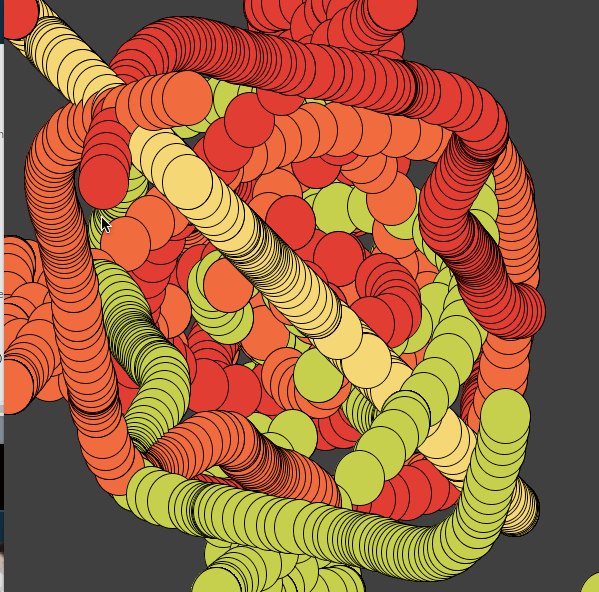
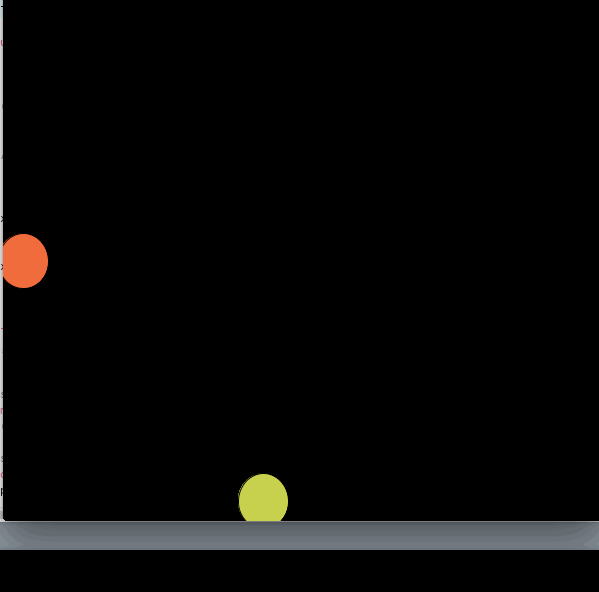
Category: Uncategorized
Class Photo
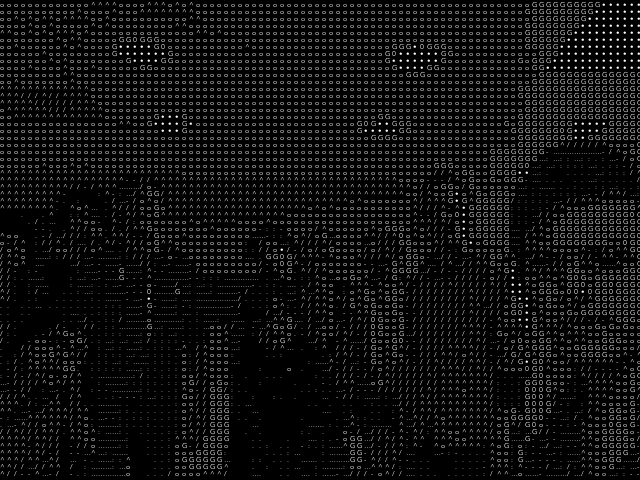
Final Project
I created an ascii art filter that works through the camera of the computer. Basically, there are characters assigned to different brightness values and they display as a pixel would. I’ve assigned symbols of varying complexity to give the illusion of lightness/darkness. Also, I’ve assigned key presses, keys 1 through 9 and 0, to change the size of the font. Lastly if you click, in frame, it will save the current image to the processing folder.
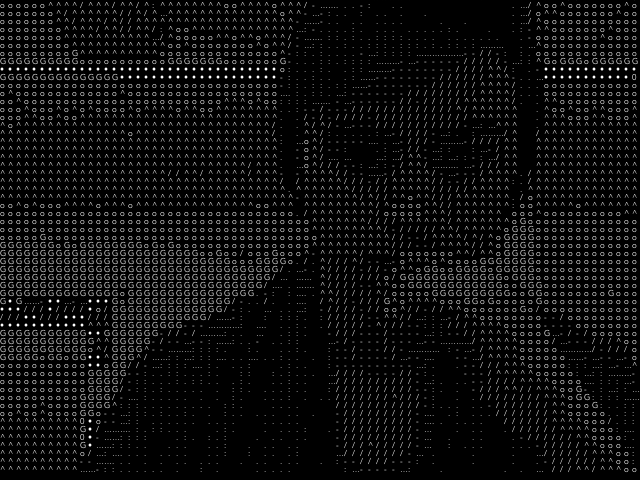
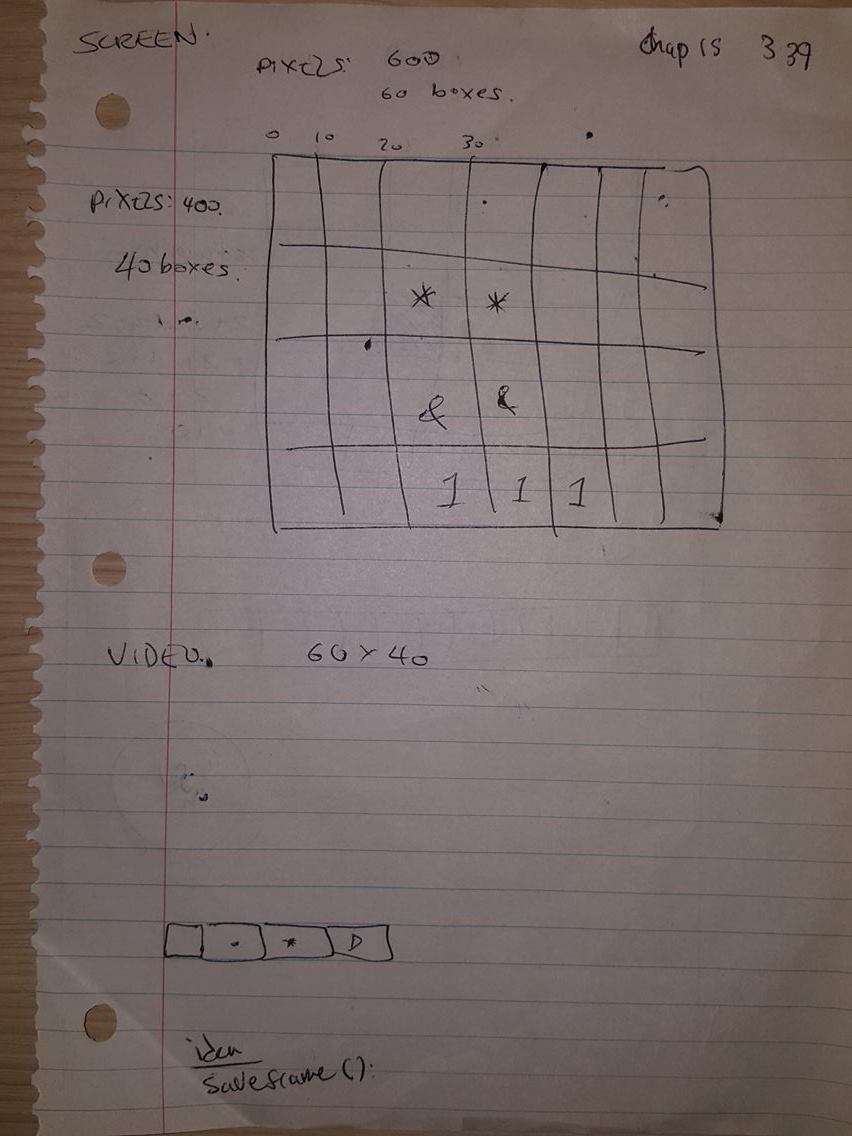

Final- Kadinskiy Clock
My inspiration for the final was Kadinskiy’s painting technique. He vizualized sounds. My initial code was to create a painting by pressing various keys that are attached to sounds and shapes. I ended up changing it into the clock. The shapes change their location and colors through time, everytime the screen is pressed with a mouse the image of a painting at that particular time is being saved. Needless to say, I tried to visualize a time though movement of shapes and colours.
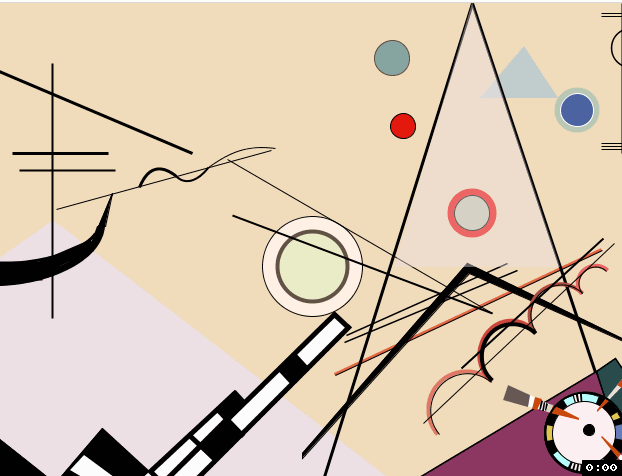
Final Project
my final project consisted of me putting my manga in processing and being able to read it from page to page i also made sound overs for it as i wanted it to be original and only mine. 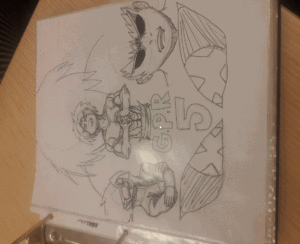
Final Project: Nightmare etch a sketch

My final project is a smeared and messy adaptation of a classic etch a sketch built on the guts of the old school arcade game asteroids with an intended theme of showing distractions that always take up our main goal in any situation. When creating my final project my thought process was on of many changes and last minutes shifts. As I started constructing the project I originally intended to have words fly around the screen in place of the blinding colored blocks seen in the final version and have your little character try and avoid those words. As I was working on this code I saw that nothing was appearing as I intended it too and instead of being an art piece on words related to distractions it instead looked disjointed and didn’t really match what I was going for. With the words not being distracting enough from your character I set out to remove the background to give off the blinding smear effect that left when you do not add a background color in the draw function. I also instead used a more typical array of randomized rectangles that would shoot out and leave a very distracting mark on the screen as you try your best to use an etch a sketch that’s entire purpose is the blind you. When you have these flashing lights in your face and any distraction content it becomes very hard to stay focused on your main goal.
References:
Etch a Sketch Owned by Spin Master Toy corporation
Asteroids designed by Lyle Rains (1979)
Learn Processing Tutorial-Arrays-Daniel Shiffman
Final Project – MouseTrap
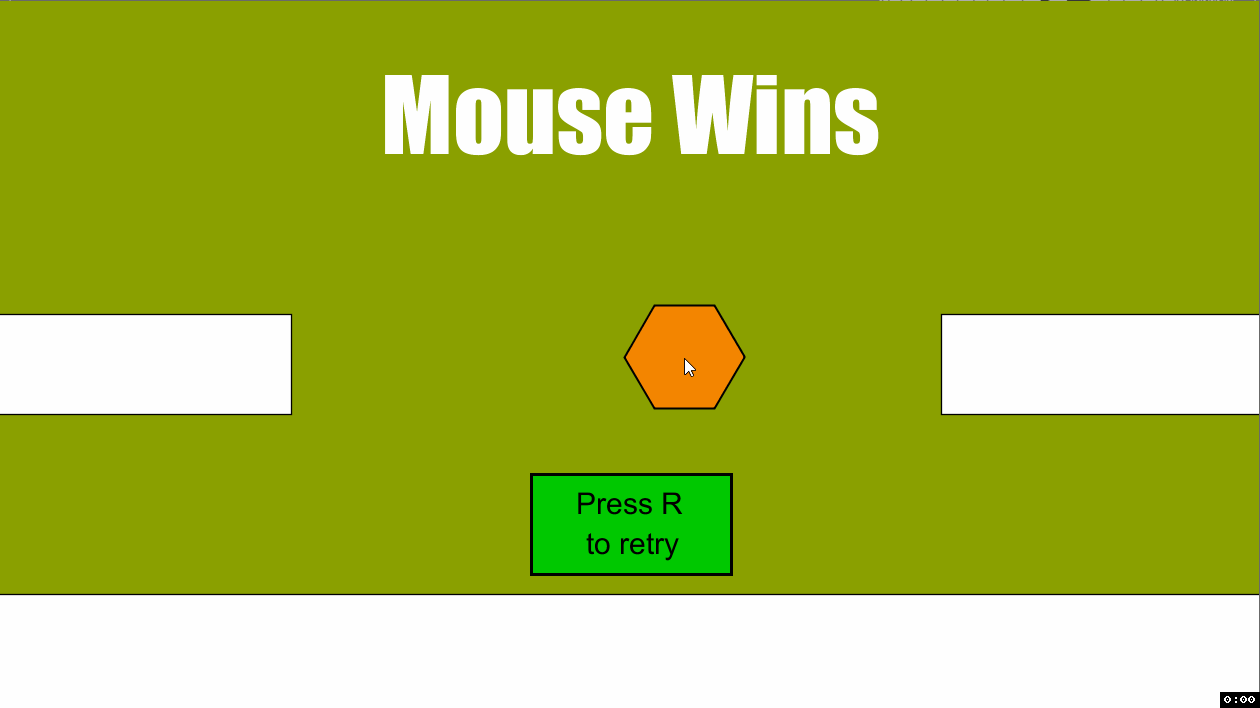
My final project is an attempt to make a multiplayer game in processing. In this game, one player uses the keyboard (w,a,d) to control the little thing you see hopping around, and another player uses the mouse to control several different varieties of traps that are used to kill the keyboard player. All of the traps serve different ways of hitting the keyboard player, and all can be activated by clicking the left mouse button. Once a trap is used a certain number of times, it’s randomly switched out with a different one (Hence the question mark rainbow block). If the keyboard player is hit by any of the traps, the mouse player wins, and if the keyboard player survives for 100 seconds, the keyboard player wins. I was able to get some feedback on a few aspects by sharing the game to some friends, but I haven’t been able to do a test with two people yet, so there may be some issues with difficulty that I couldn’t find out testing it by myself. My ideas for this game were inspired by the simple processing games made by Francis Baptiste (Rebound) and Christine Ling (JUMP!), and the style choices I made were also inspired by games along the lines of Super Hexagon and other simple, fast-paced games.
References
“Rebound: A Processing.js Game.” Rebound – a Very Simple Processing.js Game. N.p., n.d. Web. 14 Dec. 2016.
Behance. “JUMP! (A Game Made in Processing).” Behance. N.p., n.d. Web. 14 Dec. 2016.
“RegularPolygon Examples Processing.org.” RegularPolygon Examples Processing.org. N.p., n.d. Web. 14 Dec. 2016.
Final Project
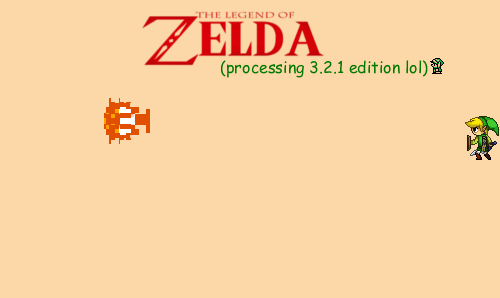
My final project is a simple game I created using graphics from the Zelda series. My original plan was to recreate interactive animated characters from various Nintendo series, though I had been unsure about it from the start and ultimately ended up changing my mind last minute due to the difficulty of the project. Though this concept is somewhat simpler than what I had planned initially, I still managed to make something both interactive and Nintendo related. The character on the right (Link) is able to move up and down using the ‘w’ and ‘s’ keys, and can shoot a sword when the ‘a’ is pressed and held. If the sword comes into contact with the enemy on the other side of the screen, the enemy disappears and a new one spawns, though . There is really no way to win or lose the game, since there is no consequence for missing the enemy or not shooting it in time. The only goal is to shoot the enemy, and not miss. I gained inspiration for this project from the rain game that was shown in class, and the Legend of Zelda games. This program is still a work in progress, however, and I hope to improve it somehow in the future.
Final Project – Árvore Game
 My final project is a developed version of my sound project. Considering I had spent most of my effort on the landscape I designed through processing, as well as the switching mechanism of the landscapes based on “a, s, or d” pressed on the keyboard. I decided to use that sketch to turn it into a game. Working on it originally as the sound project, the hardest part was making the “scenarios” or “levels” change according to the key pressed (a, s, or d), as well as the song changing with it, making each key display and play the assigned image and song. Getting that tricky part of the way through the use of classes, I was able to further improve each level with moving clouds, changing colors, and modulating trees. Considering I already had a character on the screen (stick figure) I then decided to have falling comets as the game aspect of it, and rather than try to catch the comets (as in the rain game example), your goal is to avoid the comets and try to survive while listening to 3 different tracks I have composed/played drums for. The character is controlled by (LEFT and Right) on the arrow-keys, and he can also jump by pressing the space-bar. If you are stricken 10 times, then the visuals will not display any longer and you will then have to watch a screen telling you to listen to my music online, the only way to restart the game then is by closing and opening the sketch again.
My final project is a developed version of my sound project. Considering I had spent most of my effort on the landscape I designed through processing, as well as the switching mechanism of the landscapes based on “a, s, or d” pressed on the keyboard. I decided to use that sketch to turn it into a game. Working on it originally as the sound project, the hardest part was making the “scenarios” or “levels” change according to the key pressed (a, s, or d), as well as the song changing with it, making each key display and play the assigned image and song. Getting that tricky part of the way through the use of classes, I was able to further improve each level with moving clouds, changing colors, and modulating trees. Considering I already had a character on the screen (stick figure) I then decided to have falling comets as the game aspect of it, and rather than try to catch the comets (as in the rain game example), your goal is to avoid the comets and try to survive while listening to 3 different tracks I have composed/played drums for. The character is controlled by (LEFT and Right) on the arrow-keys, and he can also jump by pressing the space-bar. If you are stricken 10 times, then the visuals will not display any longer and you will then have to watch a screen telling you to listen to my music online, the only way to restart the game then is by closing and opening the sketch again.
References:
- Alyssa. “Catch The Raindrops Game.” OpenProcessing. 30th Sept. 2011. www.openprocessing.org/sketch/40047#. Acessed 29th Nov. 2016.
- Winchester, Meri.”Processing: create a gradient with a for loop.” YouTube, uploaded by Meri Winchester. 11 Sept. 2014. www.youtube.com/watch?v=tIgLJz0ZQD4.
- Processing Example Used: File – Examples – Libraries – Sound – Demos – Keyboard
Morse Clock – Improved
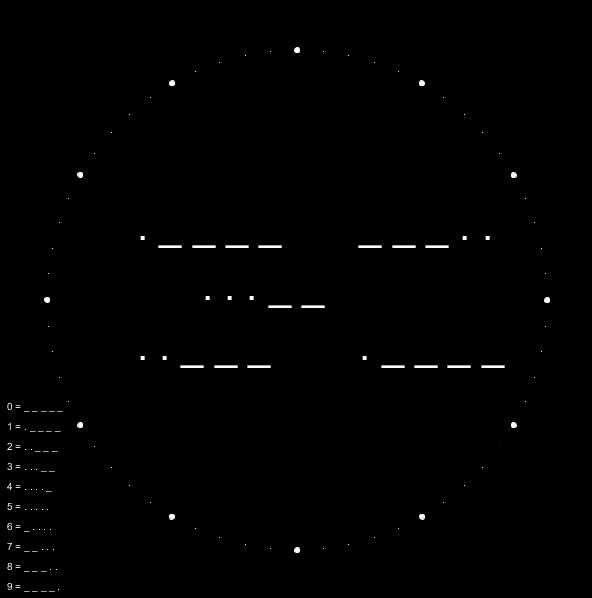
For my final project I ended up improving my Morse code clock. Initially, I expected to created a sort of “sketch mirror” that reflects what the camera reads and produces a sort of light sketch. Unfortunately, my knowledge of Processing was not vast enough to create that in a couple of weeks. Instead , I decided to finalize my favorite project. For this final version of the Morse Clock, I used the feedback I received after critiques and gave it a more modern look. First and foremost, a Morse code key was added. Making the clock comprehensive for anyone and everyone. I also removed the minutes and seconds hands , in order to have the clock be completely in code. The ellipse I used from a classic clock example on the processing open forum.
As far as the concept for the clock, it is something that came to me out of the desire to code a clock in another language. Coincidentally enough in my French class I was learning about numbers. Initially I was attempting to create a French clock, and felt unsatisfied with the concept. I was envisioning something more simplistic. Morse code was the first thing that came to mind.
Reference:
-Ar_topu10. “Analog Clock – Processing Forum.” RSS. Processing Forum, May 2016. Web. 13 Dec. 2016.